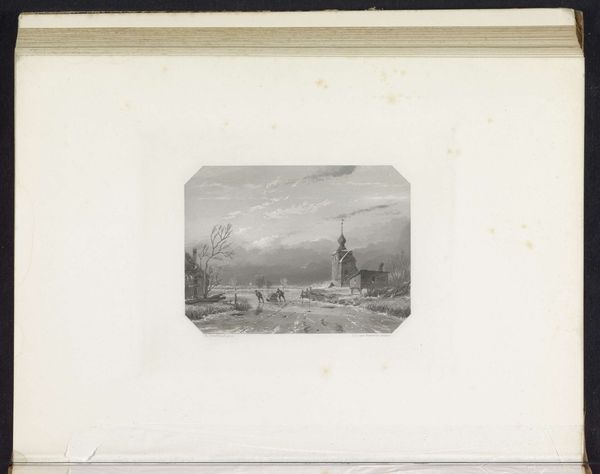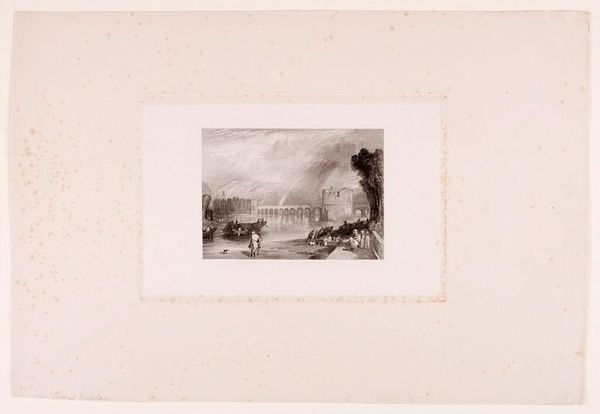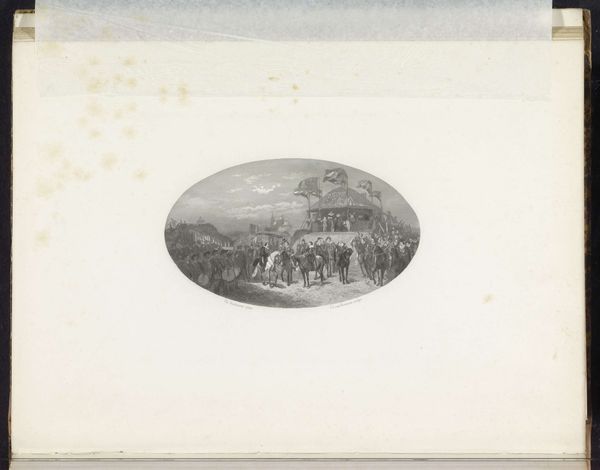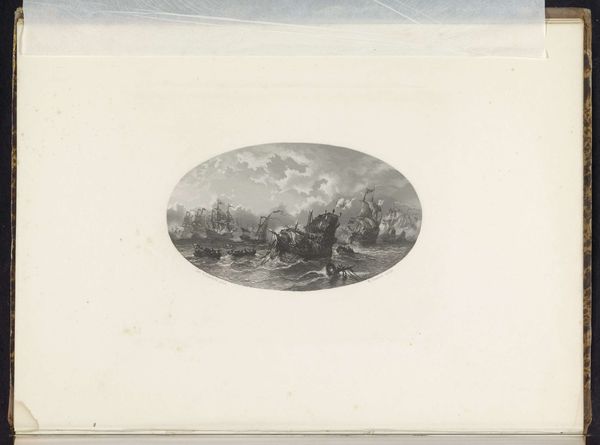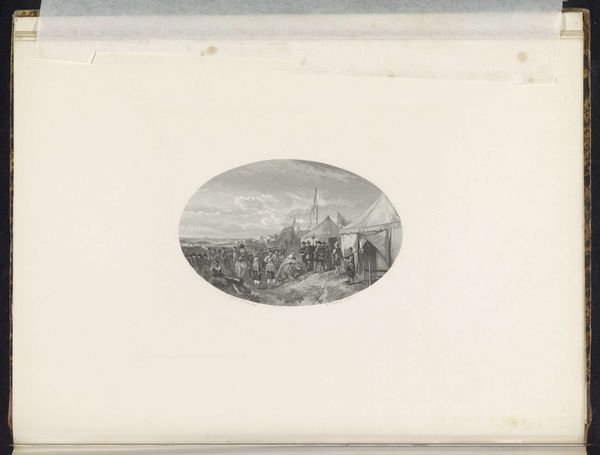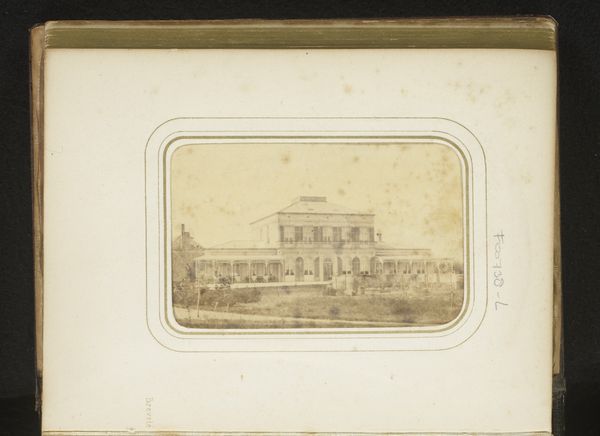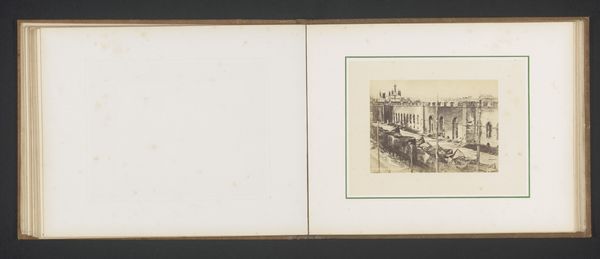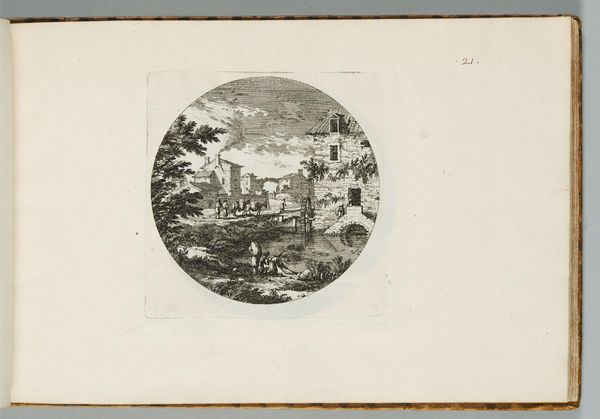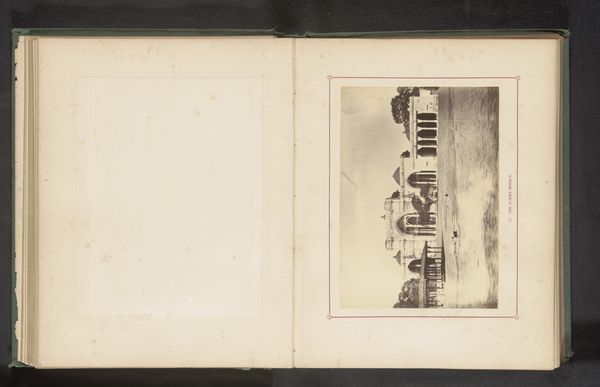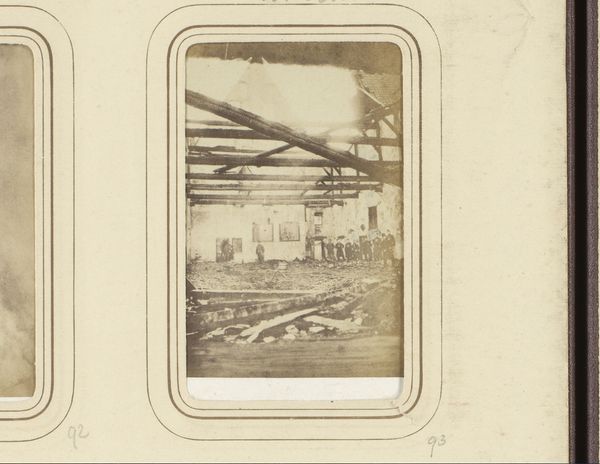
Dimensions: height 200 mm, width 250 mm
Copyright: Rijks Museum: Open Domain
Curator: This is Willem Steelink's "Het Valkhof te Nijmegen, 9e eeuw," an etching likely created between 1865 and 1870. Editor: The tonal range of the grey, along with the etched medium gives it an undeniably somber and formal mood, almost like an official document. Curator: Precisely. Steelink situates the viewer within a broader understanding of nationalism by invoking a fabricated sense of 9th century cultural identity. The people in the foreground, their gestures and poses all deliberately recall earlier depictions of civic duty and patriotism. Editor: From a strictly visual perspective, observe how Steelink meticulously renders the architectural elements of the Valkhof. The play of light and shadow along the arcade rhythmically accentuates the symmetry of the building and grounds the composition. Curator: Yes, the composition evokes what Foucault describes as the panopticon, underscoring themes of observation and the distribution of bodies within a given social-political context. We might want to ask how this representation impacts ideas about Dutch cultural preservation and historical narratives. Who is allowed to gather there and claim ownership of history? Editor: Interesting point. Returning to a more basic perspective, it's fascinating how the formal qualities create depth and distance, which ultimately helps your claims. Curator: Ultimately, this etching contributes to a constructed narrative about nationhood. It attempts to use aesthetics and historical context to elicit emotional connection and cement certain civic values of his time. Editor: It seems to say so much from a place that could also, visually speaking, signify emptiness or be totally void. An intentional paradox, I'd say.
Comments
No comments
Be the first to comment and join the conversation on the ultimate creative platform.
